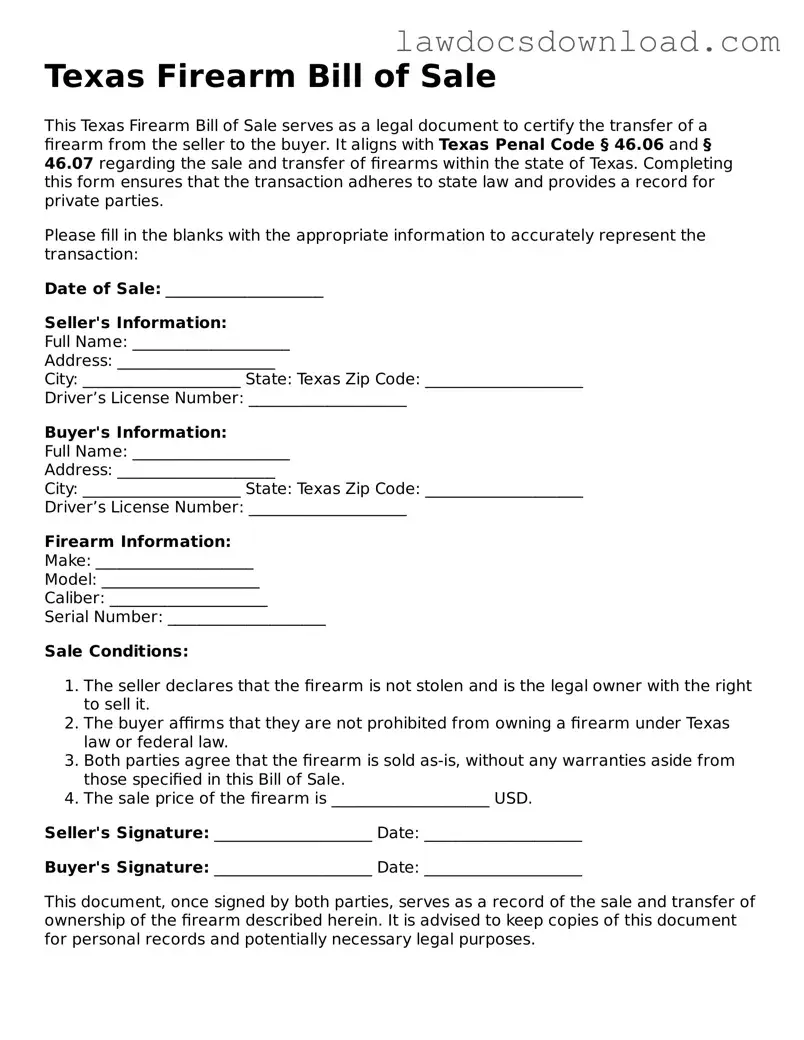Texas Firearm Bill of Sale
This Texas Firearm Bill of Sale serves as a legal document to certify the transfer of a firearm from the seller to the buyer. It aligns with Texas Penal Code § 46.06 and § 46.07 regarding the sale and transfer of firearms within the state of Texas. Completing this form ensures that the transaction adheres to state law and provides a record for private parties.
Please fill in the blanks with the appropriate information to accurately represent the transaction:
Date of Sale: ____________________
Seller's Information:
Full Name: ____________________
Address: ____________________
City: ____________________ State: Texas Zip Code: ____________________
Driver’s License Number: ____________________
Buyer's Information:
Full Name: ____________________
Address: ____________________
City: ____________________ State: Texas Zip Code: ____________________
Driver’s License Number: ____________________
Firearm Information:
Make: ____________________
Model: ____________________
Caliber: ____________________
Serial Number: ____________________
Sale Conditions:
- The seller declares that the firearm is not stolen and is the legal owner with the right to sell it.
- The buyer affirms that they are not prohibited from owning a firearm under Texas law or federal law.
- Both parties agree that the firearm is sold as-is, without any warranties aside from those specified in this Bill of Sale.
- The sale price of the firearm is ____________________ USD.
Seller's Signature: ____________________ Date: ____________________
Buyer's Signature: ____________________ Date: ____________________
This document, once signed by both parties, serves as a record of the sale and transfer of ownership of the firearm described herein. It is advised to keep copies of this document for personal records and potentially necessary legal purposes.
